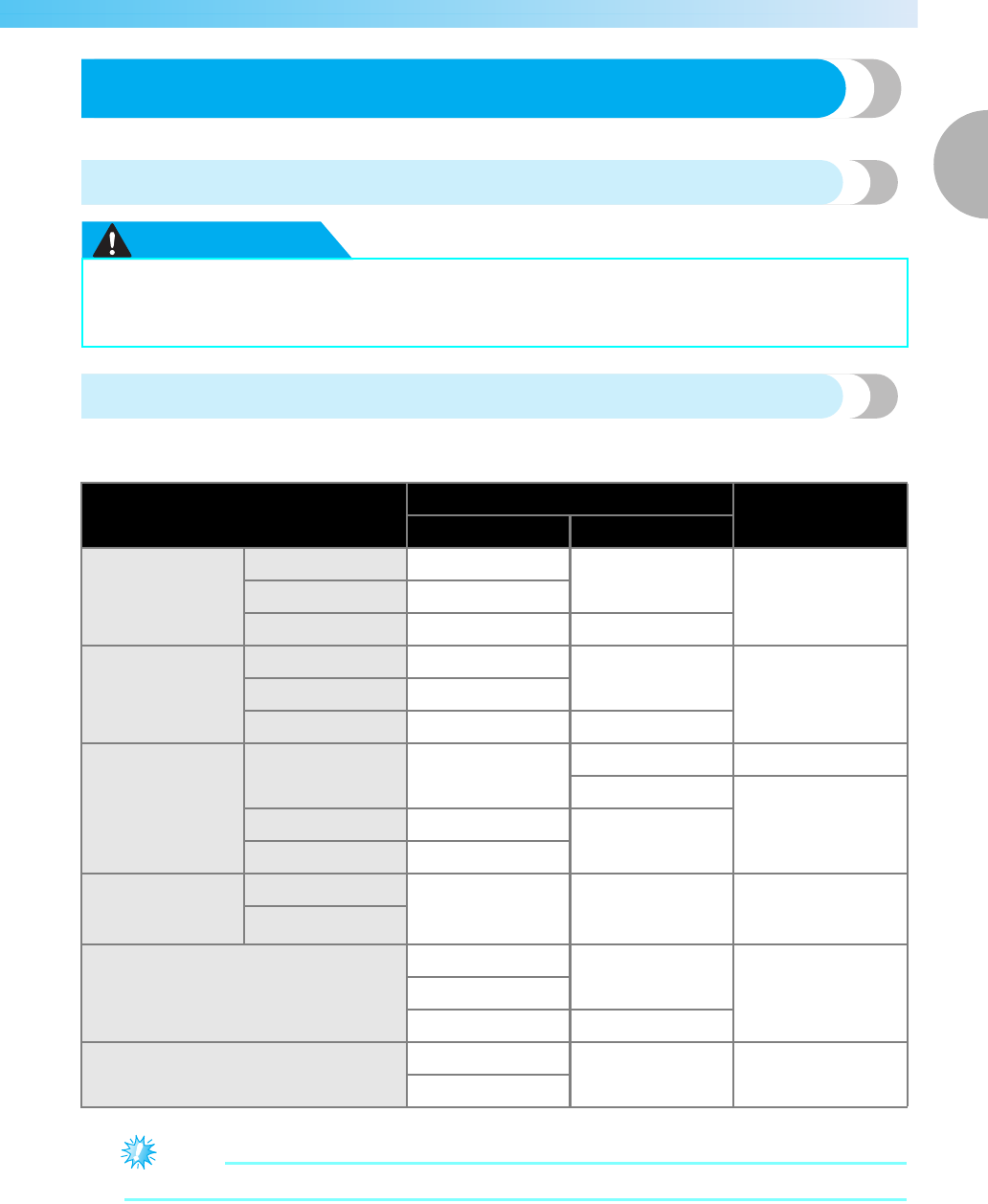
Replacing the Needle 39
1
— — — — — — — — — — — — — — — — — — — — — — — — — — — — — — — — — — — — — — — — — — — — — — — — — — — —
Replacing the Needle
This section describes how to replace the needle.
Needle precautions
CAUTION
Selecting the needle depending on the thread and fabric types
The sewing machine needle that should be used depends on the fabric and thread thickness. Refer to the
following table when choosing the thread and needle appropriate for the fabric that you wish to sew.
Note
z Never use a thread of weight 20 or lower. It may cause malfunctions.
z Only use home sewing machine needles. Use of any other needle may bend the needle or
damage the machine.
z Never use bent needles. Bent needles can easily break, possibly resulting in injuries.
Fabric Type/Application
Thread
Size of Needle
Type Size
Medium weight
fabrics
Broadcloth Cotton thread
60–90
75/11–90/14
Taffeta Synthetic thread
Flannel, Gabardine Silk thread 50
Thin fabrics
Lawn Cotton thread
60–90
65/9–75/11
Georgette Synthetic thread
Challis, Satin Silk thread 50
Thick fabrics
Denim Cotton thread
30 100/16
50
90/14–100/16
Corduroy Synthetic thread
50–60
Tweed Silk thread
Stretch fabrics
Jersey
Thread for knits 50–60
Ball point needle
(gold colored)
75/11–90/14
Tricot
Easily frayed fabrics
Cotton thread
50–90
65/9–90/14Synthetic thread
Silk thread 50
For top-stitching
Synthetic thread
50 90/14–100/16
Silk thread


















